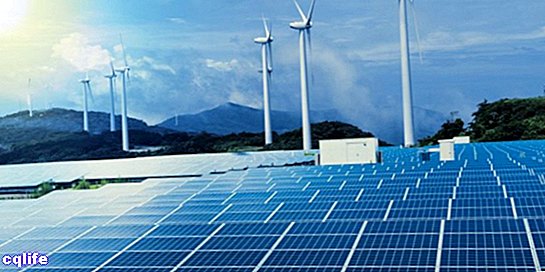- What is electrical energy?
- Types of electrical energy
- What is electrical energy for?
- How is electrical energy produced?
- Examples of electrical energy
We explain what electrical energy is and what it is for. In addition, how it is produced, types of electrical energy and examples.

What is electrical energy?
Electric energy or electricity is the energy that originates from the difference in electrical potential between two determined points, when they are put in contact by an electrical transmitter.
This contact causes a electric current which consists of the transmission of negative charges (electrons) through a suitable material for it (as are usually themetals) from the point of its generation (and / or storage) to the point of consumption. Usually electrical energy is converted into other forms of energy: light,mechanics or thermal.
In everyday life, the electrical energy we consume comes from a power line or an electrical network, which we access through plugs or sockets, installed in our homes, such as those we activate by turning on a light switch. This network is fed byBusiness that provide said service, which are usually in charge of the generation and distribution of theelectricity in thecities, regions or entire countries.
Electricity exists in nature and is an important part of numerous biological processes, such as many of those that occur in the body itself. man. The neurons of our brain and the nerve impulses of our spinal cord, for example, are electrical in nature, as is the small shock that certain eels are capable of transmitting when they feel threatened. Another example of electricity in nature is storms that sometimes have electrical effects such as lightning.
The field of thephysical In charge of the study of this type of energy is electrical physics or electricity and dates from the 18th century, although there is a traceable background from ancient times.
Types of electrical energy

We can talk about different forms of electricity:
- Static. It is the electricity produced by the friction of two bodies capable of becoming electrically charged. For example: by rubbing a comb with a handkerchief, or by bringing an arm that has been rubbed close to the screen of an old television.
- Dynamic. It is the electricity that is generated by the flow of electrical current. For example: a socket in the wall.
- Electromagnetic. It is the electricity that electromagnetic fields generate. For example: the electromagnet.
What is electrical energy for?
Like all types of energy, electrical energy has the ability to transform itself into other forms of energy. Energy, making it an extremely versatile resource. It can be fed with electrical energy to a machine that performs certain tasks, both mechanical and computational, illuminate a room with a lamp, or heat it during the winter thanks to a resistance.
How is electrical energy produced?

There are various ways of generating electrical energy,process which is normally carried out in a power plant, or in small quantities in specialized devices.
- Power stations. They produce electricity from the rotation of turbines pushed by water steam heated, for example, by combustion of coal or hydrocarbons or by nuclear reactions.
- Renewable resources. There are also power plants that take advantage of waterfalls (hydroelectric), or strong winds (wind) to mobilize its turbines and generate electricity. In addition, solar installations make the solar energy in electrical energy through a system of panels that receive radiation directly.
Once this electricity is produced, it is transmitted through power lines to cities and facilities that require it or is stored in various types of circuits.
Examples of electrical energy
Some everyday examples of the use of electricity are:
- Urban lighting. The incorporation of electrical energy to cities It was a complete revolution, which replaced gas street lamps and allowed the useful hours of urban life to be expanded by several more hours.
- The use of a television. Electricity allowed the emergence of television as well as many electrical appliances powered by the plug to the electrical network: blenders, microwaves, a toaster, refrigerators, etc.
- Medical defibrillators. These devices are used in emergency rooms, which have a voltage electrical power and allow it to be discharged onto the body of patients in cardiac arrest, to reactivate their pulses.
- The Lightning. During an electrical storm, the difference in electrical potential between theI usually and theair it is such that compensatory discharges are generated, known as lightning. We can see them with the naked eye.
